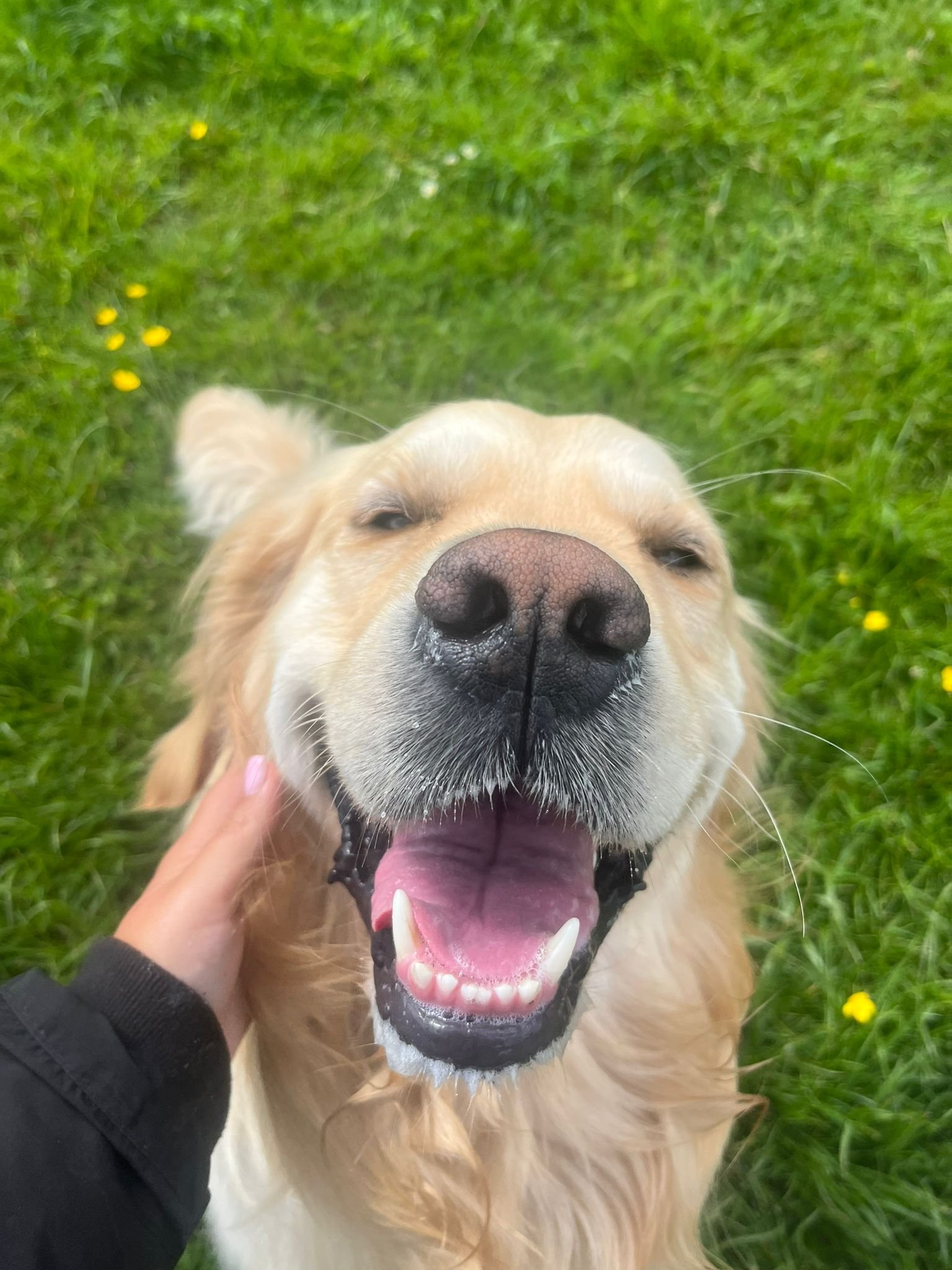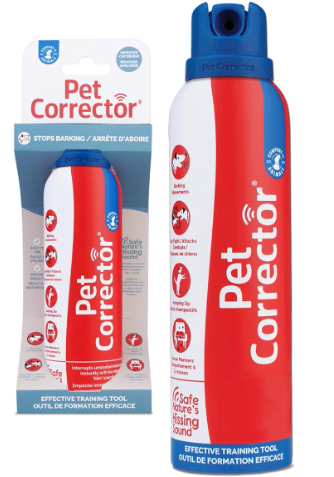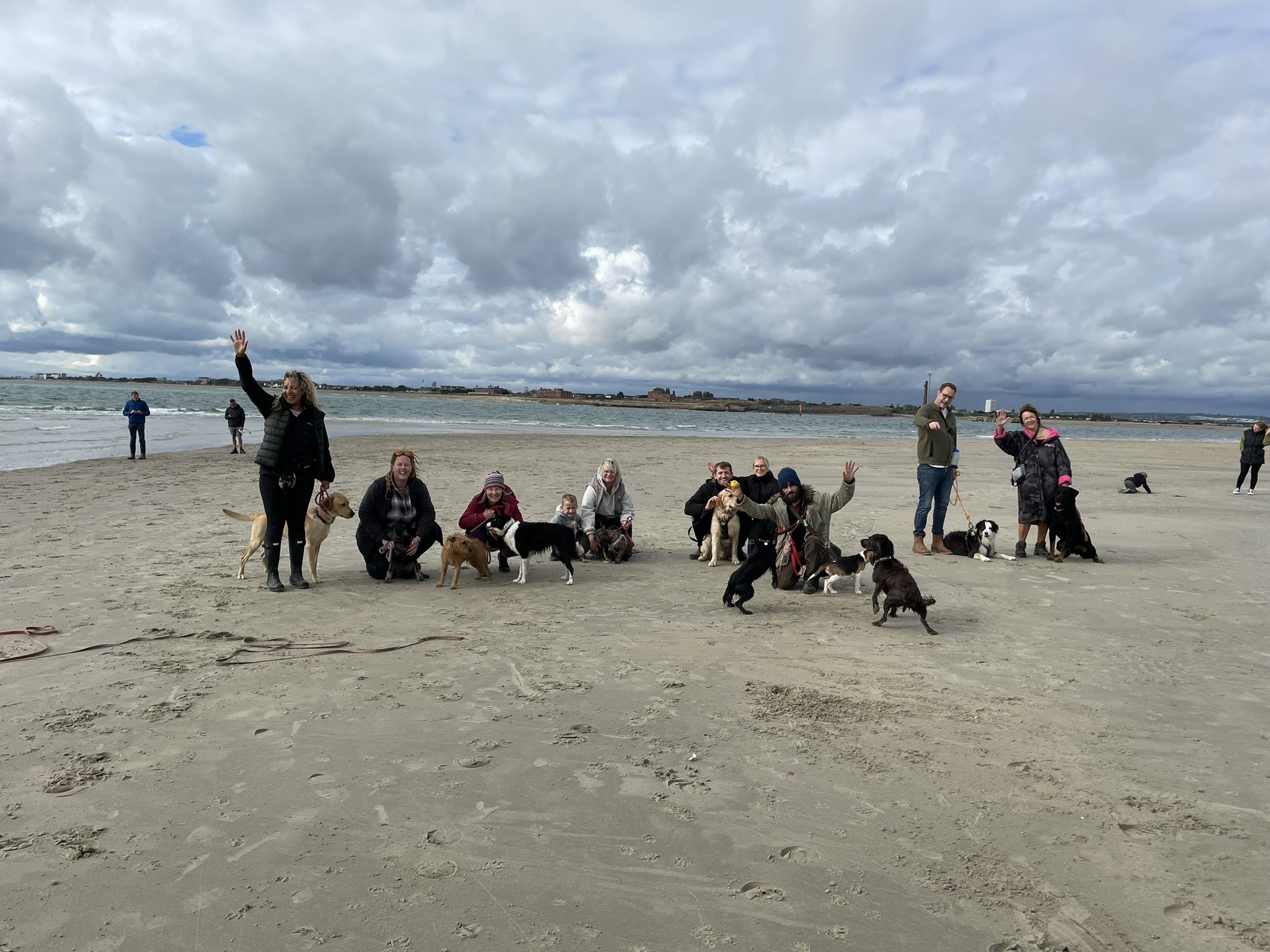6 Best Dog Training tools: Have you got yours?
➔ We may earn a small commission from products listed on this post
The pet market is overflowing with gadgets and gizmos, making it easy to feel overwhelmed when choosing the right tools to shape your dog’s behavior. I often see pet parents getting confused and unintentionally using tools incorrectly, which can lead to frustration for both them and their dog.
Take the clicker, for instance—a fantastic tool for marking the right behavior. But here’s the catch: it’s not meant to grab your dog’s attention while they’re bolting across the field in the opposite direction! Timing and purpose are everything.
To help you feel confident and effective, I’ve rounded up my top 5 dog training tools that are likely already in your dog box. Learn how to use them the right way, and you’ll be on your way to training a dog that’s a joy to be around in any situation!
Slip Rope Lead
Used on every single dog I train, or walk, in any situation. These leads would significantly change the world of dogs behaving better if more people weren’t so unsure of using them.
The majority of my long term clients will know that I often reject in the poliest way possible any retractable leads, harnesses, and standard clip leads.
It’s just because why would you want to use something to walk your dog that makes the job more difficult?
When I’m walking 4 powerful breeds, popping them on a lead within a matter of seconds, and heading to the car at the end of a walk and not being dragged there. Means I can keep the dogs, and most importantly, me safe.
Pro’s vs Cons
Pro - Teaching the dog to put their head through the loop; with the command “put your lead on”, means you can secure your dog in a matter of seconds 🙏🏽
Pro - You can walk down the road and have a dog that learns and understands to walk next to you, not in front or 5 metres ahead
Con - Your slip lead won’t work if you have it in the wrong place, or upside down! The lead does need to be sat in the correct place for it to work properly. This means right way round for the side your dog walks on, and infront of the collar, not behind it.
In moments of chaos like a “fight”, being able to chuck a slip lead over the head of a dog to maneuver a dog out of a situation, can also be a godsend.
Not only does a slip rope lead help you to teach your dog to walk nicely, relaxed and in a follower state of mind. It can also help you to correct and prevent future lead reactivity, such as: lunging and barking at other dogs.
If you have a serial puller, than you can almost always turn your slip lead into a ‘figure of 8 style Halti’ - which means no need to spend money on another tool.
2. Training Line
A training line is an incredibly versatile tool suitable for dogs of any age, breed, or size. It’s especially handy for recall training, helping your dog learn to come back to you reliably, even in distracting environments.
While it’s generally easier to teach recall to younger dogs, older dogs can learn too—it just takes a bit more patience and consistency. Imagine this scenario: you’re at the park, and your dog is happily exploring. Suddenly, they spot another dog and look ready to charge over. That dog might be on a lead or wearing a muzzle, making it important for your dog to learn that not every encounter is necessary.
This is where the training line comes into play. If your dog were off-lead and you called them, they might choose to ignore you and run off. But with a training line, you’re in control. When your dog starts heading in the "wrong" direction after ignoring your recall command (e.g., “Come” or “Here”), you can step on the line. This provides a gentle correction, showing them that their choice wasn’t ideal.
From there, you can pick up the line, give it a slight tug, and make yourself the most exciting thing around—whether that’s with treat-chasing, fun games, or engaging tricks. The training line keeps your dog secure while you redirect their attention back to you, reinforcing the behavior you want.
Training lines allow your pup to roam and explore while ensuring they stay under your control. It’s all about building trust and teaching your dog that coming back to you is always a rewarding and positive experience.
3. Treat Pouch
Having a treat pouch on hand during activities with your dog is a simple yet essential tool for effective training and maintaining your dog’s focus. Here's why:
Dogs learn best when rewarded immediately for desired behaviors. A treat pouch allows you to access rewards quickly, reinforcing good behavior in the moment. This helps your dog associate their actions—like obeying a recall or sitting on command—with positive outcomes.
Reliable recall is crucial for your dog’s safety. With a treat pouch, you can reward your dog every time they come back to you, reinforcing that returning to you is more rewarding than chasing distractions.
A treat pouch makes it easier to reinforce calm walking, polite greetings, or other behaviors you want to encourage. Instead of fumbling for treats in your pocket, you can reward your dog quickly and keep them engaged.
Pouches are designed to keep treats accessible and mess-free. They eliminate the need to stuff treats in your pockets, which can be inconvenient and unsanitary, especially with sticky or crumbly snacks.
Having treats readily available helps maintain your dog’s attention on you, fostering better communication and a stronger bond. It reinforces that you’re their source of fun, guidance, and rewards.
4. High Value Rewards (aka the best treats)
Carrying high-value treats ensures your dog stays motivated and eager to engage with you, even in distracting environments like parks or busy streets. A pouch lets you offer these rewards consistently, making training sessions more productive.
There’s no point using boring old kibble, or dried treats to encourage your dog to listen or work for you.
Combine rewards with enthusiastic praise to make the experience even more rewarding.
Keep treats flowing for desired behaviors to build strong habits.
Over time, as your dog masters commands, you can phase out treats for every action, replacing them with occasional rewards or praise.
Our go to high value treats include cocktail sausages, cheese, chicken, liver cake, and any other naturally safe, yummy smelling product.
5. Pet Corrector
Have you ever watched Cesar Millan use his signature correction sound? Imagine that multiplied by five, packed into a handy can. That’s the magic of the Pet Corrector—an effective tool for tackling unwanted dog behaviors. And yes, it’s absolutely brilliant!
In an ideal world, telling your dog “No” would be enough to stop unwanted behavior. But when your dog enters a heightened state—level 8 plus scale of excitement or reactiveness, you need to bring more to the table.
Be a Pack Leader: Project calm, confident energy that communicates, “No means no.” Dogs pick up on emotions, so leave stress and self-doubt behind.
Use Your Tools:
Start with a slip rope lead to block and redirect their focus.
Introduce the Pet Corrector if the behavior persists.
Follow up with positive reinforcement using a primary reward i.e. high value treat to reward good behavior and progress with treats and praise.
How to Use the Pet Corrector in Real-Life Scenarios
Garden Barking: If your dog is barking at the fence, step in quickly with the Pet Corrector. Spray it to disrupt the behavior and block their access to the fence.
Window Barking: Spot your dog going wild at the window? Act fast, spray the Pet Corrector, and redirect their focus.
On Walks: If your dog kicks off at another dog across the street, use the Pet Corrector to break their focus, firmly say “No,” and reset the situation. Then, continue your walk with calm authority.
This tool is designed to interrupt your dog’s heightened state—whether it's barking, lunging, or ignoring commands. It provides a quick, humane way to refocus their attention and remind them of what’s expected. Compact versions fit easily in your bag or pocket, making it perfect for trips out.
Remember to celebrate small victories. If your dog reacts less intensely or doesn’t react at all, reward them generously. Positive reinforcement builds trust and encourages your dog to repeat the desired behaviour.
6. Remote Vibrate Collar
Let’s be real: the debate around training tools like remote vibration collars stirs up strong opinions. Some trainers call them lazy or even cruel, but here’s the truth—dogs, like humans, need the freedom to explore, make mistakes, and learn from them. When used responsibly, these collars can be an incredible tool, particularly for exuberant, reactive, or dominant dogs that need extra guidance in high-stakes situations.
This isn’t a tool for minor issues, like barking at the doorbell—that’s easily managed with other methods. But if your dog is charging up to others at the park or trying to dominate interactions, a remote vibration collar can be a lifeline. It’s about creating clear boundaries to keep your dog safe and under control, especially in off-leash environments like beaches or wooded areas, where distractions are plentiful and control can be challenging.
Sure, starting with a training line in a secure park is great, but the real world is a different story. Without preparation, you might find yourself in embarrassing or even dangerous situations. Imagine being shouted at by another owner, shamed on social media, or so overwhelmed that you’re in tears on the way home. That’s not what dog ownership should feel like.
Enter the remote vibration collar—a budget-friendly, effective solution to help you manage your dog in high-pressure scenarios. Whether it’s calling them away from an interaction or ensuring they stay within safe boundaries, this tool can make a huge difference.
**But here’s the key:** these collars should only be used with guidance from a professional trainer. This isn’t about "buzz, buzzing willy-nilly"—it’s about thoughtful, purposeful training that supports your dog’s growth while maintaining their well-being. Done right, this can revolutionize your relationship with your dog, giving them the freedom to thrive while staying safe and well-mannered.
Why purchase these Dog Training Tools?
These toold can often be a great starting point if you are unsure on how to navigate a behaviour, or a piece of the training pie. However, most tools are used incorrectly by people, through no fault of their own, just a lack of general knowledge and education. When you book a behaviour session, keep in mind that the early you book your Pup or rescued dog in for rehabiliation, the quicker you’ll now how to use the tools in the box. Of course, you don’t have to use any tools, but it’s worth paying a little bit for the right stuff, than to get no where.








